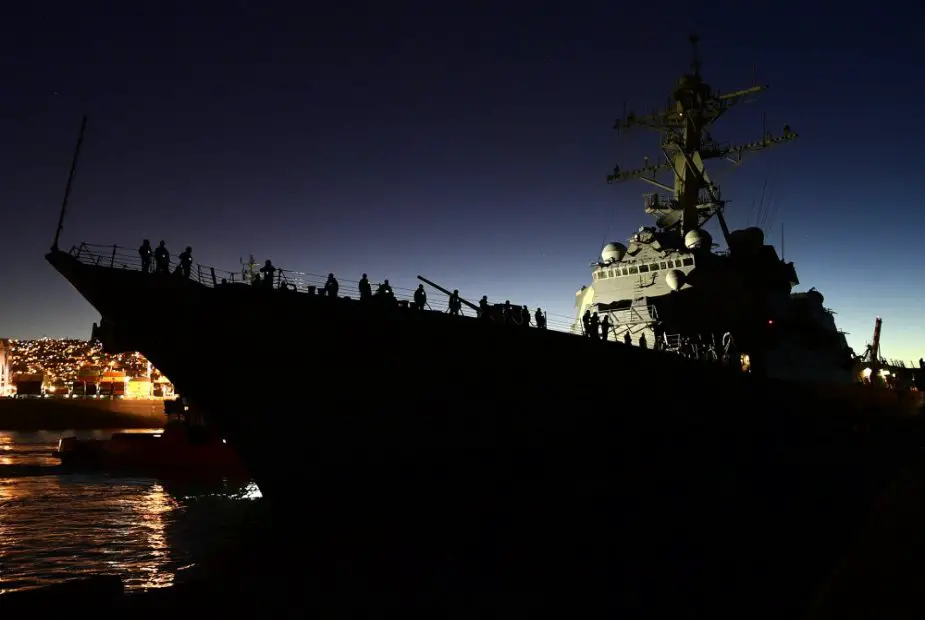Breaking news
US 4th Fleet-led UNITAS 2019 Pacific exercises concluded.
The U.S. Navy and its partners in Central America and South America concluded the UNITAS 2019 Pacific exercises, with the U.S. 4th Fleet leading a 13-nations force through anti-submarine warfare (ASW) and anti-surface warfare (ASuW) drills.
 The Arleigh Burke-class guided-missile destroyer USS Michael Murphy (DDG 112) returns to port in Valparaiso, Chile, after completing the execution phase of UNITAS 2019 Pacific (Picture Source: U.S. Navy)
The Arleigh Burke-class guided-missile destroyer USS Michael Murphy (DDG 112) returns to port in Valparaiso, Chile, after completing the execution phase of UNITAS 2019 Pacific (Picture Source: U.S. Navy)
“For an exercise to be able to run for 60 years shows its value, I think, that the nations keep coming back every year because they get something back for it. What they get back is proficiency in their teams, the ability to come together in a crisis and already know how to connect on a human level and on a system level to work on harder problems,” 4th Fleet Commander Rear Adm. Don Gabrielson told USNI News on July 3.
The exercise included more than 1,800 people, including more than 600 from the United States and 600 from host nation Chile, he said. U.S. forces included Arleigh Burke-class guided-missile destroyer USS Michael Murphy (DDG-112), P-8A Poseidon aircraft from Patrol Squadron (VP) 4, divers from Mobile Diving and Salvage Unit 2, Destroyer Squadron 40 staff leading the at-sea portion of the exercise, and 4th Fleet staff running the exercise overall.
Michael Murphy Commanding Officer Cmdr. Christopher Forch said the destroyer got to practice hunting for diesel submarines – a unique opportunity, since the U.S. Navy has only nuclear-powered submarines.
“We are operating in the Southern Hemisphere; there is not as much land mass in the Southern Hemisphere as there is in the Northern Hemisphere, so storms and distant weather phenomenon actually carries further than it does in the Northern Hemisphere. The seas are rougher, the winds and seas are a little bit more difficult to deal with,” Forch continued.
“The other thing you have to deal with is, due to the location of Chile, there’s the potential for earthquake, tsunamis; we’re on a 30-minute requirement to get underway at all times from Valparaiso due to the nature of the harbour and the way it’s designed and the potential for a tsunami," he ended.




























